Cherkessk - Overview
Cherkessk is a city located in the south of the European part of Russia, the capital of the Karachay-Cherkessia Republic. It is the main industrial, economic, and cultural center of the republic.
The population of Cherkessk is about 122,600 (2022), the area - 69.8 sq. km.
The phone code - +7 8782, the postal codes - 369000-369015.
History of Cherkessk
Cherkessk was founded as the village of Batalpashinskaya on the site of the Russian military fortification (redoubt) of the same name in 1825. The Batalpashinsky redoubt was built at the mouth of the Ovechka River in 1804.
It received its name after the victory of the Russian army under the command of General Johann Hermann von Fersen over the army of the Turkish military commander Batal Pasha in 1790. Thus, the name “Batalpashinskaya” is a rare case when a place was named in honor of the one who was defeated.
Along with the functions of a military settlement, Batalpashinskaya played a prominent role in establishing trade and cultural ties with the mountain peoples of the Caucasus. In 1869, by decree of Alexander II, the village was transformed into the town of Batalpashinsk. Later, this decision was reverted and Batalpashinskaya remained a village until Soviet times. In 1914, the population of Batalpashinskaya was about 19 thousand people.
In 1922, the village became the center of the Karachay-Cherkess Autonomous Region, from 1926 - the Cherkess National District, from 1928 to 1943 - the Cherkess Autonomous Region. In 1931, it was given the status of a town and the name Batalpashinsk.
More historical facts…
In 1934, Batalpashinsk was renamed Sulimov in honor of Daniil Sulimov, the Chairman of the Council of People’s Commissars of the Russian Soviet Federative Socialist Republic. In 1937, Sulimov was arrested and shot during the Great Purge.
After that, the city was renamed Yezhov-Cherkessk, in honor of Nikolai Yezhov, head of the People’s Commissariat for Internal Affairs (NKVD) from 1936 to 1938, during the height of the Great Purge. In 1939, after the arrest of Yezhov, his name was removed from the name of the city and only the second part of the name was preserved - Cherkessk. The population of the city was about 28,600 people.
In the late 1930s, the first large industrial enterprise in Karachay-Cherkessia, a cast iron foundry, was opened in Cherkessk. Today, it is a refrigeration engineering plant. From August 11, 1942 to January 17, 1943, during the Second World War, the city was occupied by the Germans. In 1943, the Karachais were deported to Central Asia, but the Cherkess were not affected by repression. The Cherkess Autonomous Region was abolished.
After the death of Stalin, the repressed Karachais were allowed to return to their homeland. It was decided not to restore separate Cherkess and Karachay autonomous regions, but to create a united Karachay-Cherkess Autonomous Region as part of Stavropol Krai.
In 1956, a master plan for the development of Cherkessk was developed, according to which the city was divided into three micro-districts. The Central District, as the name implies, is the industrial, transport, administrative, and cultural center of the city, where the largest public buildings are concentrated - the republican and city administrations, the General Post Office, the Drama Theater, etc. In the Northern District, industry is mainly concentrated. The Southern District is a district of new apartment buildings and private houses.
In 1957, Cherkessk became the center of the Karachay-Cherkess Autonomous Region. In 1959, 41,709 people lived in Cherkessk. March 4, 1984, a hundred thousandth resident was born in Cherkessk. In 1991, Cherkessk became the capital of a separate federal subject of the Russian Federation - the Karachay-Cherkessia Republic.
In 2001, the emblem of Cherkessk was approved. It is a red shield, at the top of which there are four square battlements symbolizing that the village of Batalpashinskaya was founded as a fortification. In the center of the shield there is a golden stele, a monument erected at the central entrance to the Zeleny Ostrov recreation and culture park and meaning the eternal friendship of the peoples living together here. Below you can see three blue stripes symbolizing the three rivers flowing through the city: the Kuban, Abazinka, and Ovechka.
Cherkessk - Features
Cherkessk is located in the northern foothill part of the Republic of Karachay-Cherkessia, on the right bank of the Kuban River. The average altitude is about 530 meters above sea level. The main waterway of Cherkessk is the Kuban River.
The climate is temperate continental. Winters are mild and long. Summers are moderately warm and short. The average air temperature ranges from plus 21 degrees Celsius in July to minus 2.5 degrees Celsius in January.
City transport is represented by trolleybuses, buses, and minibuses. Cherkessk is connected by railway with Nevinnomyssk, by roads with Krasnodar, Nevinnomyssk, and Pyatigorsk.
Cherkessk occupies a leading position in the economic potential of Karachay-Cherkessia. It produces about 50% of the industrial products of the republic, more than half of all residential buildings are constructed here, and more than three quarters of the total turnover of the consumer market are formed.
Cherkessk is the only capital among the North Caucasian republics of Russia, where the number of Russians is greater than the representatives of indigenous peoples. This is mainly due to its recent history. In the Soviet years, this new city became an industrial and scientific center, which attracted people from all over Russia. In the 1990s, local people relatively calmly coped with the collapse of the USSR, without fierce interethnic conflicts.
In total, representatives of more than 80 nationalities live in the city. According to the 2010 All-Russian population census, the most numerous peoples living in Cherkessk were Russians (54%), Karachais (16.2%), Cherkess (13%), Abazins (8.1%), Nogais (1.4%), Armenians (1.3%).
This city is the center of a unique multinational culture. Four state theaters are open here: the Republican Russian Drama and Comedy Theater, the Karachay Drama Theater, the Cherkess Drama Theater, the Abazin Drama Theater, as well as the State Philharmonic of the Karachay-Cherkess Republic.
Main Attractions of Cherkessk
Karachay-Cherkess Natural and Historical-Cultural Museum-Reserve. In total, this museum has about 100 thousand exhibits of various historical eras: rare books, paleontological finds, archival documents, ancient artifacts, old photographs, and plenty of other interesting things. Krasnoarmeyskaya Street, 58.
Cherkessk Art Gallery - a one-story brick building (1904) located in the historic center of the city. In the halls of this museum you can see paintings and other works of art created by local artists, as well as famous Russian artists. Krasnoarmeyskaya Street, 56.
Church of the Intercession of the Blessed Virgin Mary (1730) - a monument of wooden architecture and the spiritual center of Orthodox Christians in the Karachay-Cherkessia Republic. Lenina Street, 154a.
Recreation Park “Green Island” - one of the largest parks in southern Russia with an area of about 90 hectares. It was completely renovated in 2012-2013. Here you can find two ponds, an exhibition of military equipment, a children’s area with figures of fairy tale heroes, a large number of rides, a skate park, several cafes.
Batalpashinsky Lakes. Located about 18 km from Cherkessk, these lakes were turned into a reservoir, which became known as “The Cherkess Sea”. It is a reserve of drinking water for the resort towns of the Caucasian Mineral Waters, a popular place for recreation of locals and tourists.
To the south of Cherkessk, near the town of Ust-Dzhegut, there are burial mounds of the Bronze Age (the 3rd-2nd millennium BC).
Karachay-Cherkessia is a popular destination for lovers of active tourism. The most famous resorts in this region are Dombay, Arkhyz, Teberda, where ski tourism and mountaineering are developed.
Dombay, one of the most popular Russian ski resorts, is located in the heart of the Teberda Nature Reserve. Here tourists can find ski slopes of all difficulty levels. The slopes of Arkhyz are more suitable for beginners. In general, the Teberda Nature Reserve with its mountain peaks, rivers, lakes, and waterfalls is an amazing world of wildlife.
In recent years, other types of outdoor activities have been developing in Karachay-Cherkessia: rafting, cycling, horse riding, etc.


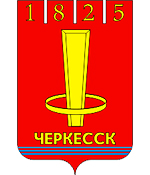
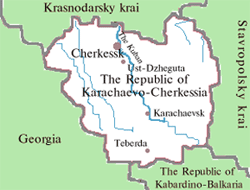
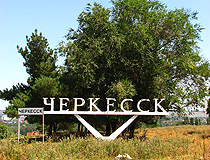
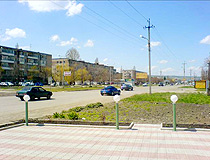
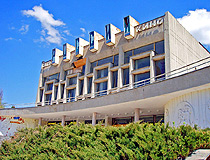
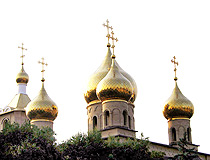
The comments of our visitors